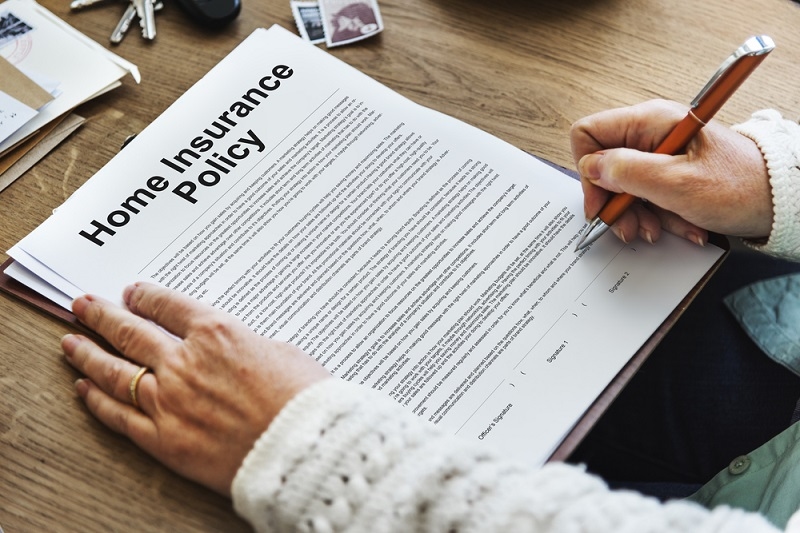
Purchasing your first home is a milestone event, but the world of home insurance can be daunting. A solid home insurance policy not only covers your home—it provides peace of mind, safeguards your investment, and allows you to bounce back financially from unexpected catastrophes. Whether you need to know the best first-time home insurance policy or are attempting to grasp homeowners insurance policy prices in California, this article provides concise, practical advice to enable you to make the right choice.
Here in this article, we will guide you through the basics of coverage, exclusions, cost, customization tactics, and how to enhance your home insurance policy coverage so that you can be certain about your protection.
Buying a home insurance policy for the first time is not merely a to-do for your mortgage lender—it's an important financial strategy. It protects you from damage, theft, liability claims, and more. But too many first-time homeowners fall into the trap of selecting the lowest-cost policy without realizing what they're covered for—or not covered for.
Learning to tailor home insurance policy terms, decipher what "dwelling coverage" and "liability protection" mean, and recognize common home insurance policy exclusions will ensure you don't experience hidden costs later on.

As a new buyer, it's tempting to take the first offer that comes your way. But insurance coverage limits, deductibles, and rates differ significantly among carriers. Begin by comparing at least three carriers and examine closely:
The ideal first-time buyer home insurance policy provides well-balanced coverage with a reasonable deductible and great customer service, not simply a cheap premium.
New homeowners tend to understate the replacement value of their home and belongings. A good home insurance policy needs to cover you in terms of rebuilding your house from scratch, not its market value. Ensure that your policy considers personal belongings, loss of use (if you have temporary residence needs), as well as liability coverage.
The homeowners insurance policy cost in California varies based on location, home value, construction materials, and risk factors such as wildfires or earthquakes. On average, California homeowners pay between $1,000 to $1,200 annually for standard coverage. However, homes in wildfire-prone zones can see premiums rise significantly.
Factors that impact your cost include:
Always inquire with insurers regarding bundling discounts, loyalty schemes, and home improvements that lower your premium.
California homes require extra coverage against floods and earthquakes—neither is typically included in standard home insurance policies. Consider obtaining individual cover, or endorsements for these risks to plug the gaps.
One-size-fits-all insurance rarely provides the ideal level of protection. As a homeowner, it’s essential to tailor your home insurance policy contents to your specific situation. Here’s how:
Prior to tailoring your policy, conduct a full home inventory. Document your valuable items, electronics, jewelry, appliances, and other important possessions. Not only does this help with claims, but it also helps you verify if your policy limits are adequate.
Some standard policies may exclude expensive or specialty items. Discuss riders with your agent for:
Riders allow you to enhance your home insurance policy coverage without paying too much for protection you don't require.
Read the fine print to know what's excluded. Standard home insurance policy exclusions are:
If any of these are a risk in your area, you'll need to buy additional coverage or policy endorsements to make sure you're covered.
Life doesn't stay the same—and neither should your insurance. Any significant change such as a remodel, buying costly items, or creating a home office means you need to bump up your home insurance policy coverage. Review your needs every year or after activities such as:
Extended or comprehensive replacement cost coverage might be an excellent option for first-time homebuyers. It keeps you covered even when rebuilding your house is more expensive than anticipated due to inflation or supply shortages.
Don't forget to take advantage of liability coverage upgrades if you get a lot of visitors, have a pool, or have pets.
Most insurance companies provide bundling discounts if you combine home insurance with auto or life coverage. This can trim 10–25% from your overall premium.
Adding a security and safety feature to your home can earn you an insurance discount. Installing a home security system, deadbolt locks on exterior doors, and smoke detectors on every level of your home qualifies as a security and safety feature.
You'll also find discounts for smoke detectors, smart alarms, security cameras and deadbolt locks, and they will help reduce risk, too.Insurers are fond of risk-reducing investments.
Credit score is a factor in your insurance premium in most states. Have good credit to achieve better rates and qualify for lower premiums.
Your home insurance policy is only worth as much as the company that backs it.Here are some methods to evaluate potential companies:
Don't hesitate to ask plenty of questions. An honest insurer will embrace them.
Don't make these mistakes when buying your first home insurance policy:
Proactivity keeps you from being exposed—or overpaying—for inadequate protection.
Home insurance shouldn't be treated as a "set it and forget it" type of thing. As your life continues to change—whether you make renovations, collect new valuables, or experience changes to the local market—so does your insurance. An annual review, and making any changes, can help your home insurance remain accurate, current, and adequate. During the review, you should also check to see if your dwelling limits, personal property, and liability are sufficient. It is also a good time to double-check for any typical home insurance exclusions or new endorsement options. Being proactive can help protect you financially and ensure that your home is always adequately covered.
Purchasing your first home can be very exciting; however, just as important as having the right home insurance policy to protect your asset. You should now be getting familiar with the costs of homeowners' insurance policies in California, understanding typical exclusions, and noticing how to tailor home insurance policy contents.
The right home insurance policy for your scenario as a new buyer is a policy that is tailored to you and your life, simple to navigate, and adaptable to change as your life circumstances change.
Ultimately, take your time to shop, ask questions, and change coverage if your circumstances change.
After all, your home is not just your investment; it is where life happens. Ensure it wisely.
This content was created by AI